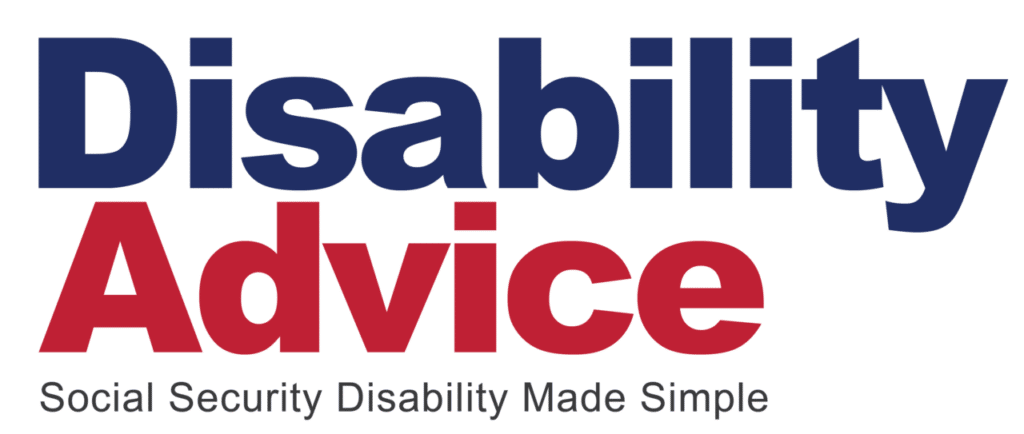How Much Does SSDI Pay in Pennsylvania?
To be eligible for SSDI, you must have earned enough work credits and have a medical condition that aligns with the Social Security Administration’s definition of disability. While denials are common for initial applications, you can appeal the decision through various stages. Once approved, you receive monthly payments that continue as long as the disability persists or until retirement age, when the benefits convert to regular Social Security retirement payments.
Pennsylvania residents’ payments are impacted by their work record, local living costs, and state-level benefits. To learn more about how much SSDI pays in Pennsylvania, contact our dedicated team at Disability Advice today.
How SSDI Payment Amounts Are Calculated
SSDI payments are calculated using a federal nationwide formula. Benefits are based on lifetime earnings and work credits, rather than state residency. However, Pennsylvania still plays a vital role in SSDI through supplemental state benefits and cost-of-living adjustments, also known as COLAs.
The Social Security Administration reviews your Average Indexed Monthly Earnings, or AIME, to determine your lifetime earnings. This calculation is based on your highest-earning working years, adjusted for inflation. It reflects how much you earned and contributed to Social Security throughout your work history.
How Work History Affects Your SSDI Payment
To qualify for SSDI, you must have earned enough work credits, which are based on your annual income and capped at four per year. Most adults need at least 20 credits earned in the last 10 years before their disability manifests.
The Impact of Cost-of-Living Adjustments
The Cost-of-Living Adjustment, or COLA, is an annual increase in Social Security benefits, including SSDI, determined by the SSA. COLA keeps pace with inflation, ensuring rising prices do not erode beneficiaries’ purchasing power. COLA increases are the same for all SSDI recipients nationwide, regardless of which state you live in.
Pennsylvania-Specific Factors Affecting SSDI Payments
Pennsylvania offers supplemental programs, housing assistance, vocational services, and other local resources to residents that can affect SSDI recipients’ overall income.
Pennsylvania State Supplementary Assistance Programs
While SSDI recipients do not receive an automatic state supplement in Pennsylvania, the State Supplemental Payment, or SSP, is available to eligible recipients. This program is commonly available to low-income individuals receiving Supplemental Security Income benefits, or SSI.
Meanwhile, the Office of Vocational Rehabilitation provides SSDI recipients with job training, accommodations, and job placement. Similarly, SSDI recipients in PA may qualify for the following housing assistance:
- Section 8 Housing Choice Vouchers
- State or city-based affordable housing programs
- Subsidized senior or disability housing
How Medicaid and Other Benefits Interact With SSDI in Pennsylvania
- Medicaid: While SSDI recipients do not automatically qualify for Medicaid like SSI recipients, they can qualify based on income, household size, and health needs.
- Supplemental Nutrition Assistance Program: You may qualify for SNAP if your total income is low enough after counting SSDI. This program provides monthly assistance with purchasing food.
- Low-Income Home Energy Assistance Program: LIHEAP helps pay winter heating bills and prevent utility shut-offs. This program is based on income; SSDI recipients with limited income usually qualify.
Average SSDI Payment Amounts in Pennsylvania
As of 2024, the average monthly Social Security Disability Insurance payment for recipients in Pennsylvania is approximately $1,548.78. SSDI payment calculations do not vary from state to state and are based on a uniform federal method. However, the cost of living in Pennsylvania can impact lifetime earnings, thus affecting the payroll taxes deducted during recipients’ careers. In addition, residents can access the previously mentioned programs to supplement their SSDI income.
Breakdown by Age, Disability Type, and Earnings Level
Different claimant profiles in Pennsylvania can affect typical payment ranges. Depending on your age at your disability’s onset, you could have higher or lower lifetime earnings. Similarly, the type of disability you have can influence approval speeds and supplemental benefits.
Lastly, your earning history determines how much SSDI benefits you receive. Higher past wages equal a higher AIME, or Average Indexed Monthly Earnings, which results in a higher monthly SSDI.
How to Maximize Your SSDI Benefits in Pennsylvania
Pennsylvania applicants can take the following steps to ensure they get the maximum SSDI benefits they’ve earned:
Ensure Accurate Earnings Records and Work Credits
You can get your earnings record from the SSA portal. Once you create or log into your account, download the Social Security Statement or full Earnings Record PDF to view your earnings record. Look for the following errors:
- Missing years – Gaps in earnings can lower your AIME and benefits.
- Underreported income – Make sure the SSA does not have less than what you earned.
- Incorrect employer names – This can indicate misreporting.
- Self-employment discrepancies – It is crucial to have accurately reported net income.
Seek Expert Guidance on Navigating Pennsylvania SSDI Nuances
Work with a professional advocate who can help you avoid the common application mistakes. They can also help you leverage state-specific benefits to ensure you are getting the most out of your claim.
Common Questions About SSDI Payments in Pennsylvania
Can SSDI Payments Be Garnished in Pennsylvania?
In Pennsylvania, SSDI benefits are generally protected from garnishment by private creditors. However, specific exceptions exist under federal law, including the following obligations:
- Child support and alimony
- Federal taxes
- Federal student loans
- Court-ordered restitution
Does Pennsylvania Offer Any Extra Disability Benefits Beyond Federal SSDI?
Pennsylvania offers several state-specific programs that supplement SSDI benefits, including the State Supplementation Program, Medical Assistance for Workers with Disabilities, and the Ticket to Work Program. These initiatives aim to enhance financial support and improve access to services for people with disabilities.
How Often Do SSDI Payments Change Or Update in Pennsylvania?
Federal guidelines determine SSDI payments in Pennsylvania and are subject to periodic adjustments and scheduled payments. An annual COLA accounts for inflation to adjust benefits annually. In January 2025, benefits increased by 2.5 percent.
Can I Receive SSDI and Pennsylvania State Disability Benefits Simultaneously?
You can receive SSDI along with benefits from Pennsylvania state-administered programs. However, you must meet the eligibility criteria for each. For example, if your SSDI payments are relatively low due to limited work history or earnings, you may also qualify for SSI. Similarly, Pennsylvania offers a State Supplementation Program that provides additional financial assistance to individuals receiving SSI.
How Much Does SSDI Pay in Pennsylvania?
In Pennsylvania, SSDI payments are based on a federal formula using lifetime earnings and work credits. Although SSDI payment calculations use a uniform method across the U.S., Pennsylvania residents may access additional support through programs such as State Supplementary Payment, Medicaid, SNAP, and energy or housing assistance.
For tailored assistance and to maximize your benefits, contact Disability Advice for a free consultation or benefits evaluation.
- Free case evaluation
- Assist with denied claims
- Ensure you have all documents
- Make the process easy for you

“Professionalism at its best. From intake to getting my claim started, they are the ones you need. 100% recommend to everyone.”
Pablo P.

“Having never gone through this process before, it was very easy and straightforward. VERY professional and polite.”
Alan A.

“I had a great experience with my representative. She was very friendly and she made the process very easy. I’m glad I had the pleasure to work with her in filing my claim. She provided great customer service.”
Dana C.

“I was very nervous about reaching out for help with disability benefits. This experience was so much easier than what I thought it would be. They were understanding and supportive, and answered all of my questions. I would highly recommend them.”
Alice P.

“One of the best customer service experiences I have ever had. Patient and kind and couldn’t of made my experience better. Thank you for all the help.”
Jama M.

“I was very pleased and impressed by the advocate. I feel that my chances of receiving my disability benefits are more likely to come in a timely manner.”
Danny C.
Fill in the form below and let us know how we can help you!
"*" indicates required fields

“Professionalism at its best. From intake to getting my claim started, they are the ones you need. 100% recommend to everyone.”
Pablo P.

“Having never gone through this process before, it was very easy and straightforward. VERY professional and polite.”
Alan A.

“I had a great experience with my representative. She was very friendly and she made the process very easy. I’m glad I had the pleasure to work with her in filing my claim. She provided great customer service.”
Dana C.

“I was very nervous about reaching out for help with disability benefits. This experience was so much easier than what I thought it would be. They were understanding and supportive, and answered all of my questions. I would highly recommend them.”
Alice P.

“One of the best customer service experiences I have ever had. Patient and kind and couldn’t of made my experience better. Thank you for all the help.”
Jama M.

“The person I spoke with was very knowledgeable and very thorough with answering all of my questions and making sure all my information was correct. He was very patient, kind, and was very helpful. I wasn’t sure if I would qualify, and he checked and took all of my information. The process was made very easy, thank you so much for your help.”
Patrice I.


